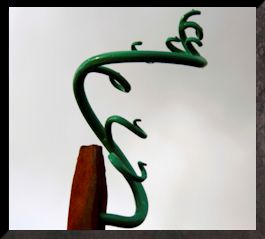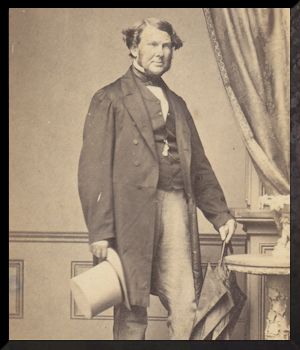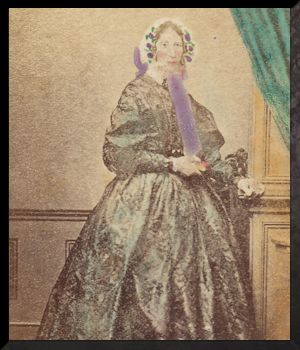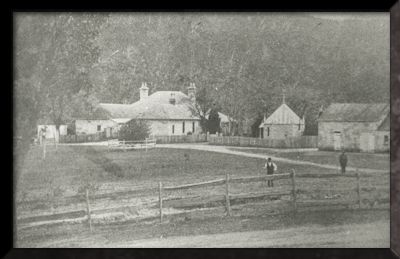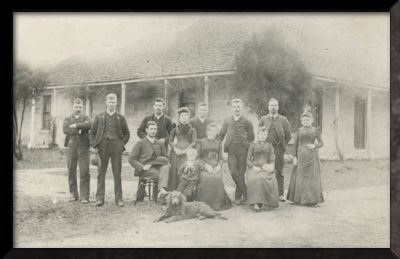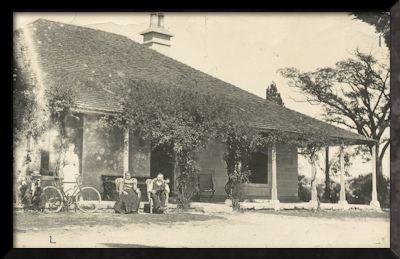|
|
|
|
||||||
|
|
THOMAS AND MARY BROWN MOVE INTO ESKBANK HOUSE 'Eskbank House’, built in 1842 as the home of Thomas and Mary Maxwell Brown, stood firm while the land around it was transformed from sylvan glades to black industry, before settling into the subdivisions there today. Thomas and Mary married in June 1838 and almost immediately set sail for Sydney, heading for Bathurst, where Mary’s brothers lived. Thomas leased Andrew Brown’s ‘Cooerwull’ for two years, buying the first parcel of land to become available in the Lithgow Valley in 1840. From there, the ‘Eskbank Estate’ grew to 900 acres, stretching from Farmer’s Creek up into Oakey Park, and across the Valley floor to Mort Street.
Brown was a gentleman. Like his friend James Walker, he was a Bench Magistrate at Hartley Courthouse, but he was no pastoralist. Rather, he was a canny industrialist, establishing Eskbank Colliery and, with Walker, lobbying to bring the railway through Lithgow. His companies and landholdings were arranged in complicated ways that enabled him to dodge government restrictions on land ownership and tenders. This made him wealthy but also led to the embarrassing termination of his parliamentary career as the Member for Hartley (1872-1876) after a commission of inquiry found he had hidden his interest in Eskbank Colliery’s bids for lucrative New South Wales Government Rail contracts. Despite this, Brown’s influence over the Valley was profound. For much of the 19th century the words Eskbank and Lithgow were interchangeable, and family historians often find birth certificates marked Eskbank, creating the false impression their relatives were born in the house. Mary is a shadowy figure, but her home was known for its hospitality, even as her estate was swallowed by industry. She was sadly childless, and died in 1878. Brown sold Eskbank to ironworks investor James Rutherford and died in Sydney 1881: the Browns are buried with the Walkers at Wallerawang.
Rutherford had no interest in living at Eskbank, so rented it out and the house became known as the Grange. The estate was next sold to William Sandford and then the Hoskins brothers. Throughout this period the ironworks owners lived at ‘Esk Roy’, which is now the Lithgow Golf Club, and the house was the residence for managers of the Blast Furnace, including the Mortlocks, local miners who had risen to manage the steelworks. The house became run down and was divided into flats during the World War II housing crisis, but in 1948 Eric Bracey, scion of the local retailing family, decided to rescue it. He bought it from Australian Iron & Steel and deeded it to Lithgow City Council:
Eskbank House reclaimed its name and opened as a Museum in 1966, under the Lithgow District Historical Society. Since 2003 it has been managed by Lithgow City Council: a relic of the crucible of industry that was the Eskbank Estate, a monument to the entrepreneurial drive of the 1800s and as one of the earliest house museums in Australia, symbol of the civic pride of 20th century Lithgow.
Naomi Parry, ‘History’ in Integrated Design Associates, Eskbank House Conservation Management Plan, produced for Lithgow City Council 2012.
|
|
||||||
|
|
|
|

